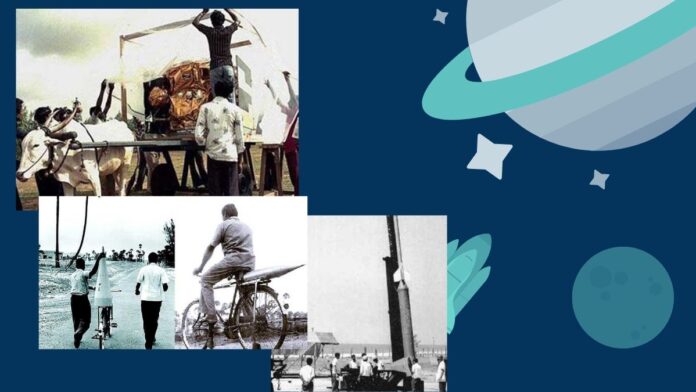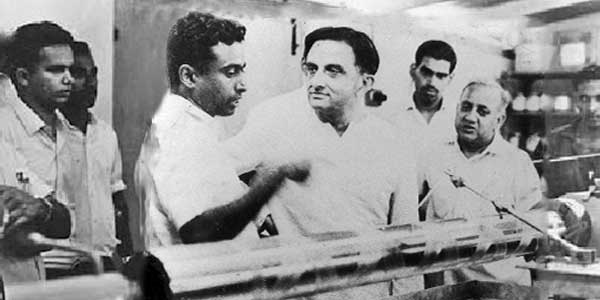
How did ISRO become one of the world’s largest space organizations?, Know all about ISRO, from ISRO’s history to future projects, in this article
Contents
- 1 Establishment and Development of ISRO
- 2 List of all the satellites launched by ISRO so Far
- 3 Future of ISRO
- 4 Sources
Establishment and Development of ISRO
ISRO (Indian Space Research Organization) began in India in the 1920s, when scientist S.K. Mitra conducted several experiments for the sound of the ionosphere by implementing a land-based radio system in Kolkata. Later, other Indian scientists such as C.V. Raman and Meghnad Saha contributed significantly to the scientific principles applied in Space Science. The period after 1945 was a period when significant developments were made in space research in India.
Vikram Sarabhai
Vikram Sarabhai (the founder of the Physical Research Laboratory in Ahmedabad) and Homi Bhabha (who founded the Tata Institute of Fundamental Research in 1945.) were two scientists who first contributed significantly to the development of ISRO. Engineers from Indian Ordnance Factories were thus involved in the development of ISRO to demonstrate their knowledge of fuels and advanced metallurgy, which was done because of their expertise in propellants and advanced metallurgy at that time. The Ordnance Factories were the only organizations to receive them.
Space Science
Initial experiments in space science included the study of cosmic radiation. In addition, the high altitude and air tests, deep underground experiments in the Kolar mines, and the analysis of the upper atmosphere – studies were carried out at research laboratories, universities, and independent locations. This space research was further encouraged by the Government of India.
Department of Atomic Energy
In 1950, the Department of Atomic Energy was established, which was used to provide funds for space research across India. During this time, tests on meteorology and aspects of the Earth’s magnetic field continued. Studies on meteorology and the Earth’s magnetic field have been carried out since the establishment of the Observatory in Colaba in 1823. However, when the Soviet Union space organization, now known as Roscosmos, successfully launched Sputnik 1 in 1957, the possibilities opened for the rest of the world to launch space.
National Research Committee of India (INCOSPAR)
Thus, India decided to go into space when the Indian National Research Committee (INCOSPAR) was established in 1962 by the Government of India. Dr. Along with Vikram Sarabhai, INCOSPAR established Thumb Equatorial Rocket Launching Station (Thumba Equatorial Rocket Launching Station – TERLS) at Thiruvananthapuram for upper atmospheric studies.
Later INCOSPAR was named ISRO, and the Indian Space Research Organization was formed in 1969. Vikram Sarabhai provided the necessary direction to work in developing ISRO, recognizing the role and importance of space technology in developing a nation. Thus ISRO began to work on its mission to provide space-based services to the country and build Space Science technology independently.

A. P. J. Abdul Kalam
Aeronautical Development of the Defense Research and Development Organization (by Press Information Bureau, Government of India) as a scientist after completing his studies at Madras Institute of Technology in 1960, becoming a member of Abdul Kalam Defense Research and Development Service (DRDS) Joined the establishment. ). He started his career by designing a small hovercraft, but did not live up to his liking for a job at DRDO,
Kalam also became part of the INCOSPAR committee, working under the noted space scientist Vikram Sarabhai. In 1969, Kalam was transferred to the Indian Space Research Organization (ISRO), where he was the Project Director of India’s first Satellite Launch Vehicle (SLV-III), successfully launching the Rohini satellite into near-Earth orbit in July 1980. Posted. Kalam started work on an expandable rocket project independently in DRDO in 1965. In 1969, Kalam gained government approval and expanded the program to include more engineers.
Establishment of the Department of Space (DOS)
In 1972 the Government of India established a Space Commission and the Department of Space (DOS). Thus the establishment of ISRO institutionalized space research activities in India, managed by the Department of Space and reporting to the Prime Minister of India.
India’s first satellite “Aryabhata,” was followed by rockets – several communication satellites.
Aryabhata, India’s first satellite launched by the Soviet Union on April 19, 1975, was built by ISRO. In 1980, Rohini became the first satellite to be placed into orbit by SLV-3, an Indian-made launch vehicle. ISRO later developed two other rockets to launch satellites into polar orbits, the first – the Polar Satellite Launch Vehicle – PSLV and the second – the Geosynchronous Satellite Launch Vehicle (Geosynchronous) to place the satellites into geostationary orbits. Satellite Launch Vehicle – GSLV).
These rockets have launched several communication satellites and Earth observation satellites. In addition, satellite navigation systems such as GAGAN and IRNSS have also been found. In January 2014, ISRO also used an indigenous cryogenic engine at the GSLV-D5 launch of GSAT-14.
Chandrayaan-1
ISRO launched a lunar orbiter, Chandrayaan-1, into the lunar polar orbit on October 22, 2008, which later detected water on the Moon. On November 5, 2013, a Mars orbiter, Mars Orbiter Mission which entered Mars orbit on September 24, 2014, became the first nation to succeed in its first attempt at Mars and the world’s fourth space agency as well as Mars Asia’s first space agency to reach orbit.
On June 18, 2016, ISRO launched twenty satellites in a single vehicle; on February 15, 2017, ISRO launched 104 satellites simultaneously in a rocket (PSLV-C37), a world record. Furthermore, ISRO launched its heaviest rocket, the Geosynchronous Satellite Launch Vehicle-Mark III (GSLV-MK III), on June 5, 2017, and put the communication satellite GSAT-19 into orbit. With this launch, ISRO could launch 4 tons of heavy satellites in the GTO.
Chandrayaan -2
ISRO launched the Chandrayaan-2 spacecraft from GSLV MkIII-M1, the geosynchronous satellite launch vehicle, on July 22, 2019. The mission was launched by Geosynchronous Satellite Launch Vehicle Mark III (GSLV Mk III) on July 22, 2019, at 2.43 am IST (09:13 UTC) from the second launch pad on the Moon. It reached the lunar orbit on August 20, 2019, and started the orbital position for the landing of Vikram Lander. The Vikram Rover was scheduled to conduct scientific experiments on latitudes near the Moon, about 70 ° south in the southern polar region, at about 1:50 am on September 7, 2019, for a lunar day.
However, the lander deviated from its intended trajectory, starting at an altitude of 2.1 kilometers (1.3 mi), and lost communication when the touchdown was confirmed. ISRO Chairman K. Sivan has confirmed in a preliminary report reporting a crash accident that the lander’s location has been found, and “it must have been a difficult landing.” “Orbiter,” part of the mission with eight scientific instruments, is on and will continue its seven-year mission to study the Moon.
To Serve the Nation
ISRO has retained its mission to bring a place in the service of the commoner to serve the nation. In the process, it has become one of the six largest space agencies worldwide. The largest fleet of ISRO communication satellites – INSAT and remote sensing – IRS satellites carry out communication satellites automatically, meeting the growing demand for fast and reliable communication and earth observation. In the modern era, ISRO develops and distributes satellite products and equipment specific to the nation. Broadcasting, communication, weather forecasting, disaster management tools, geographic information systems, cartography, navigation, telemedicine, and dedicated distance education satellites are some of them.
To achieve complete self-sufficiency in these applications, it was necessary to develop a cost-efficient and reliable launch system, which took shape as the Polar Satellite Launch Vehicle (PSLV). The famous PSLV has now moved on to become a preferred carrier for satellites from various countries due to its reliability and cost-efficiency, which promotes unprecedented economic cooperation. Therefore, the Geosynchronous Satellite Launch Vehicle (GSLV) was developed keeping in mind the heavy and high demand for geosynchronous communication satellites.
Besides technical capability, ISRO has contributed to the country’s science education. In general, various dedicated research centers and autonomous institutes for remote sensing, astronomy, astrophysics, atmospheric science, and space science function under the aegis of the Department of Space. In addition, ISRO’s lunar and interplanetary missions and other scientific projects promote scientific education and provide valuable data to the scientific community that enriches science.
List of all the satellites launched by ISRO so Far
Future of ISRO
Future readiness is the key to maintaining an edge in technology, and ISRO strives to adapt and enhance its technologies to develop the country’s needs and ambitions. Thus, with the development and use of ISRO heavy-lift launchers, human spaceflight projects, reusable launch vehicles, semi-cryogenic engines, single and two-stage orbit (SSTO and TSTO) vehicles, and composite materials for space applications. It is moving forward.
Sources
- Isro
- Indian Academy of Sciences.
- Indian National Science Academy.
FACT CHECK: We strive for accuracy and fairness. But if you see something that doesn’t look right, don’t hesitate to Contact us.
DISCLOSURE: This Article may contain affiliate links and Sponsored ads, to know more please read our Privacy Policy.
Stay Updated: Follow our WhatsApp Channel and Telegram Channel.











